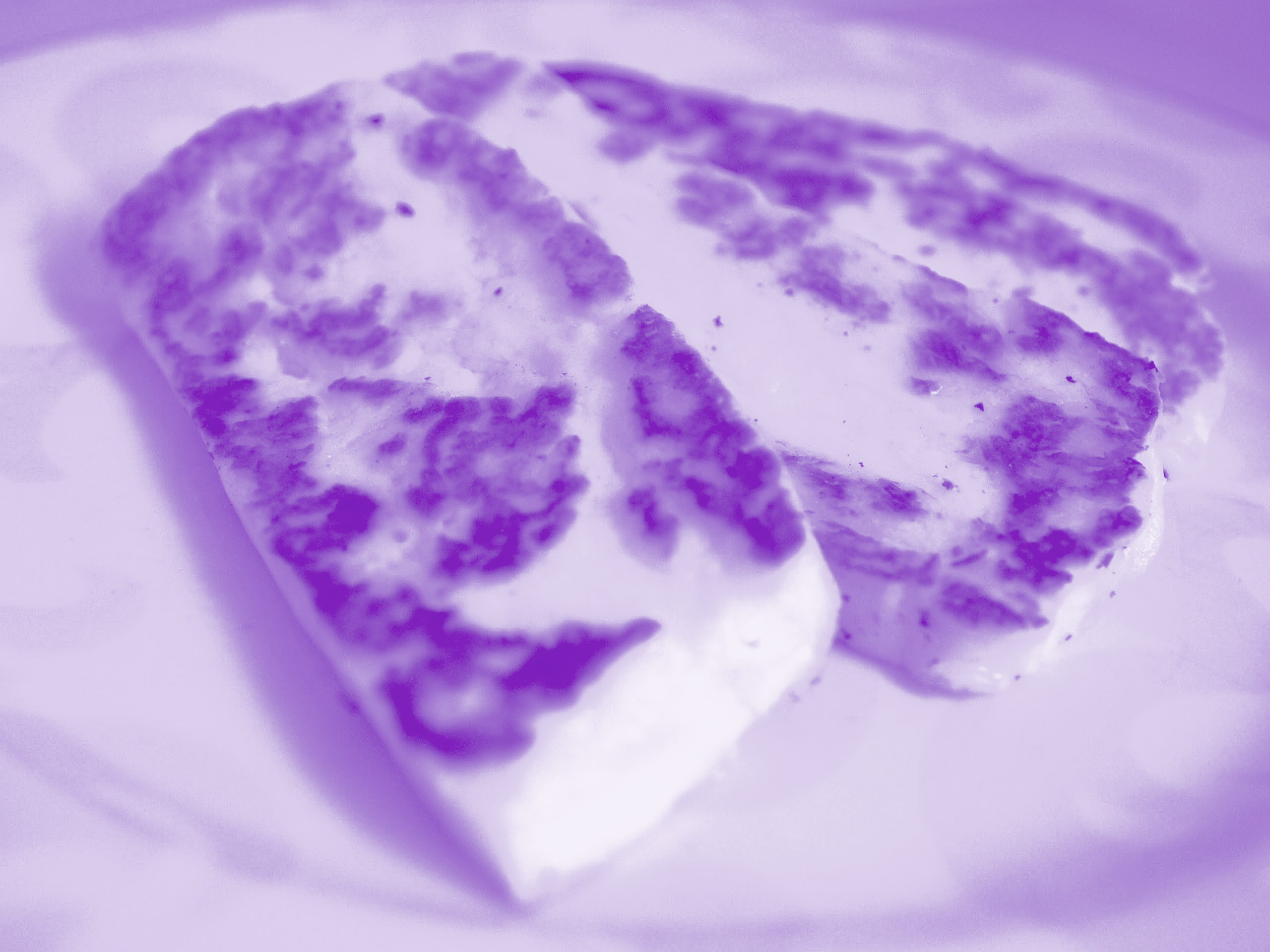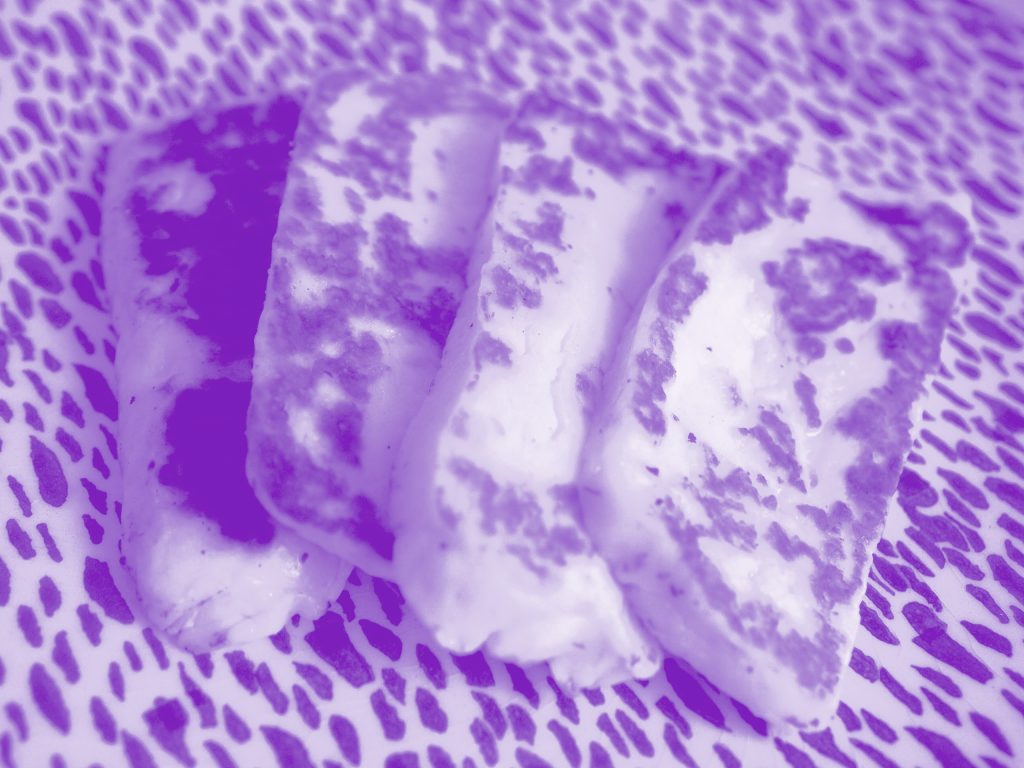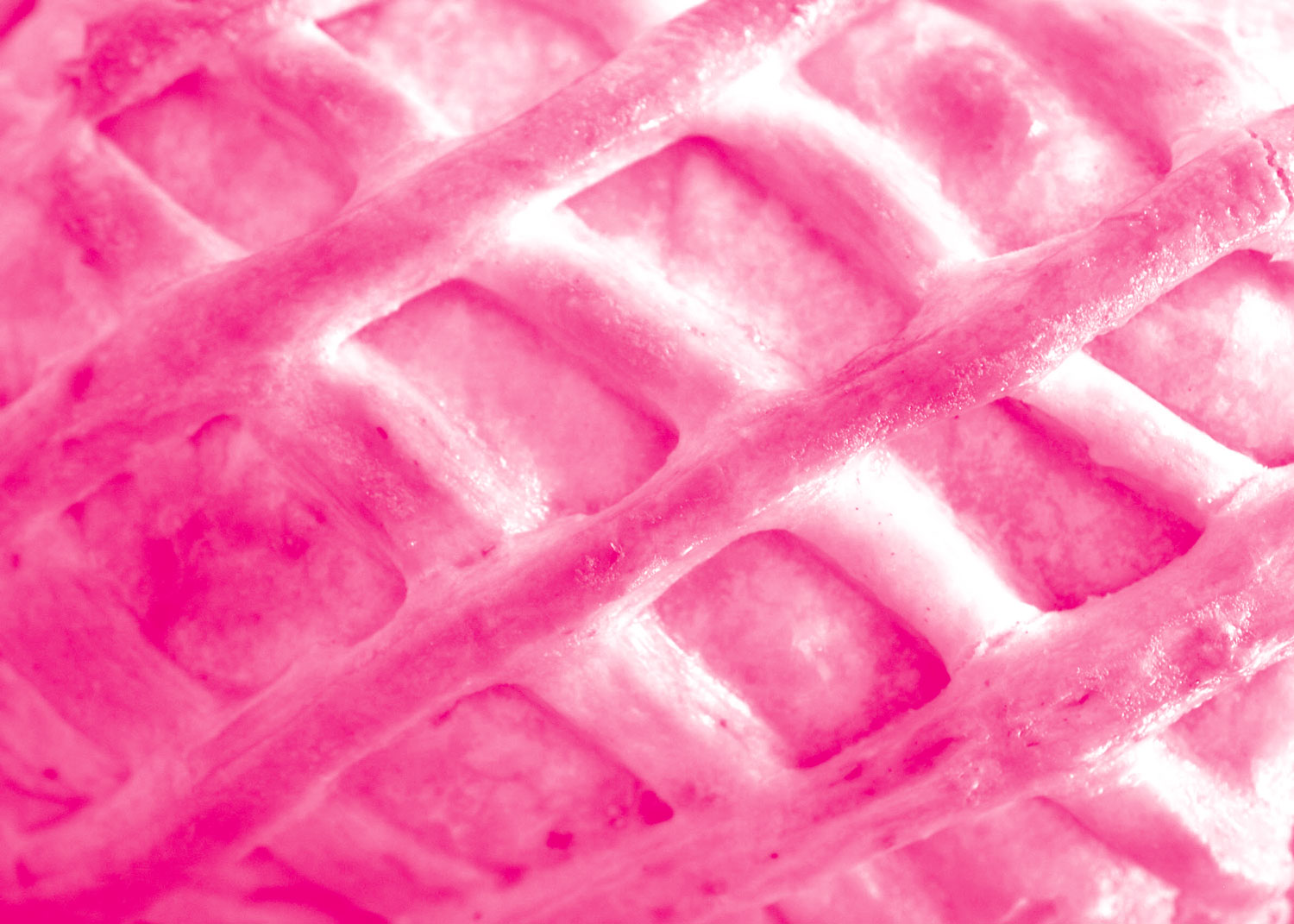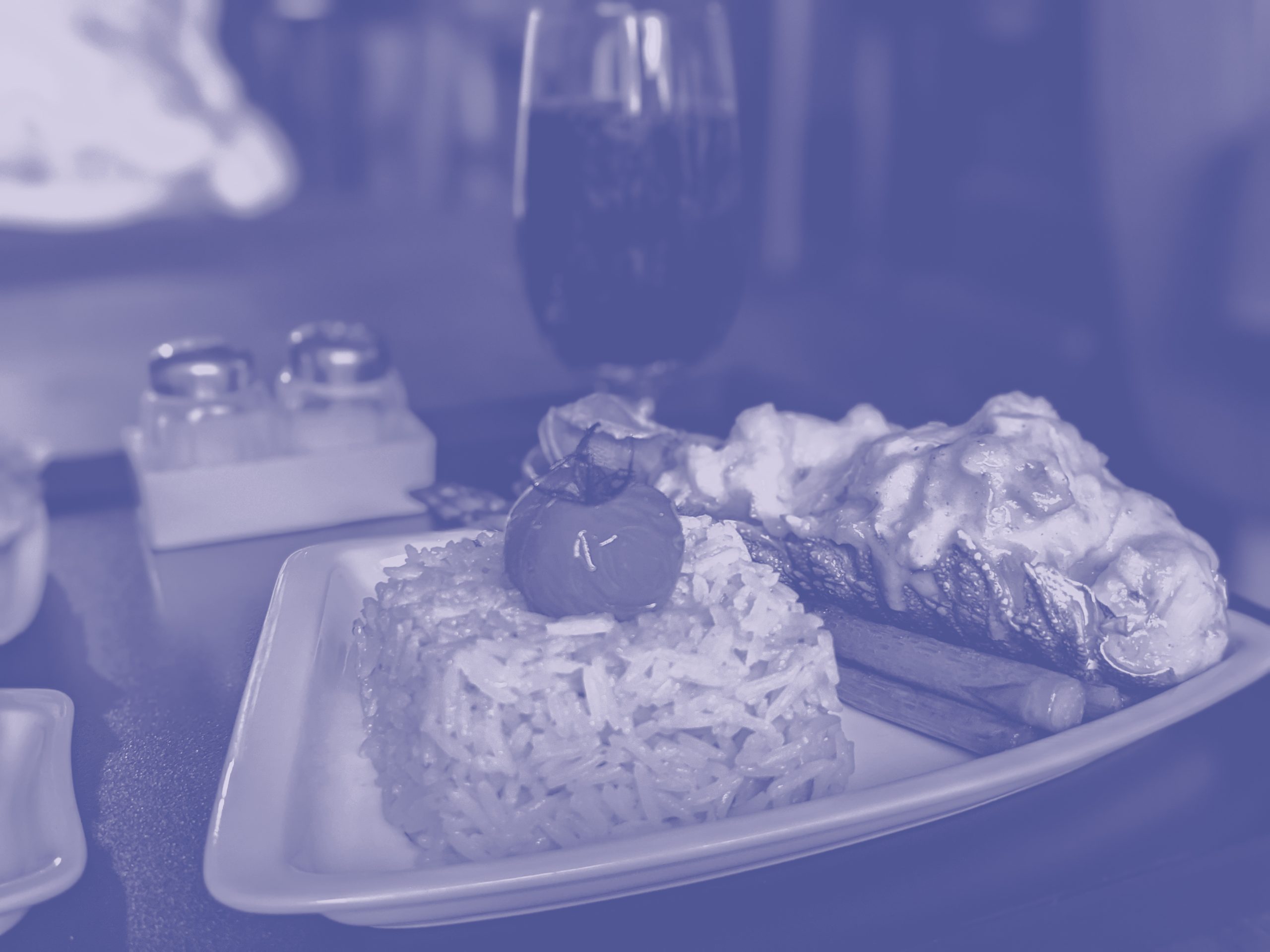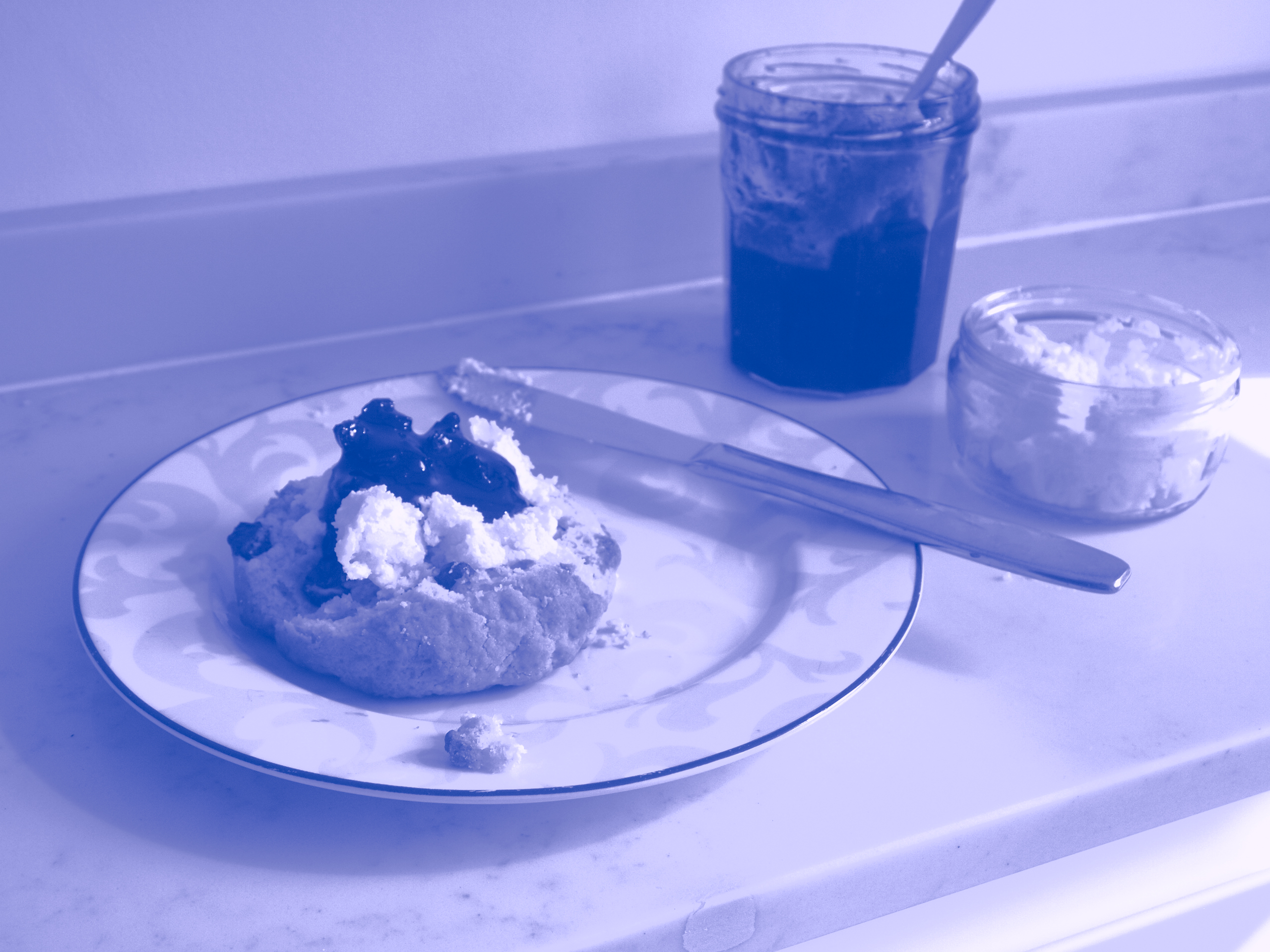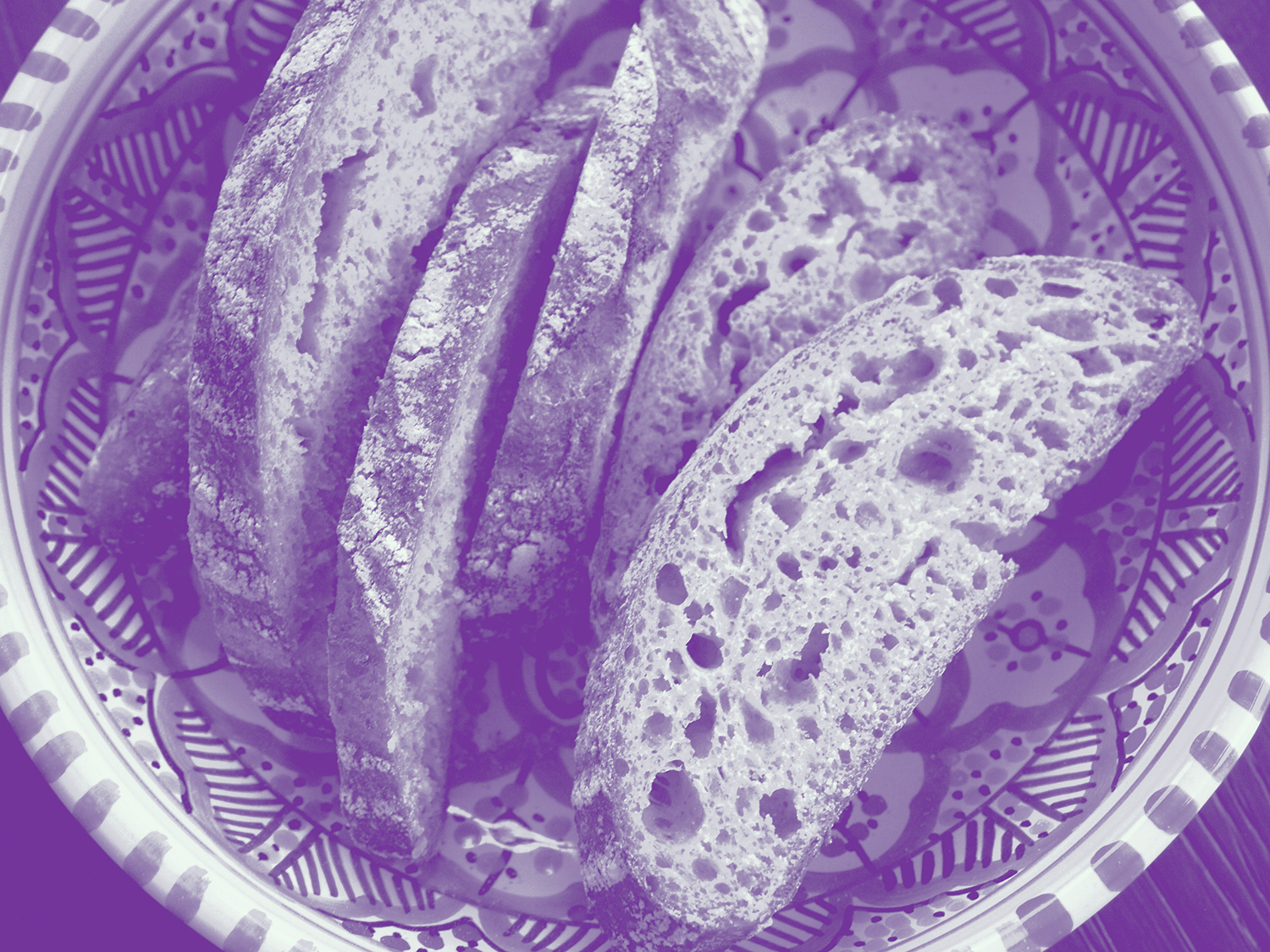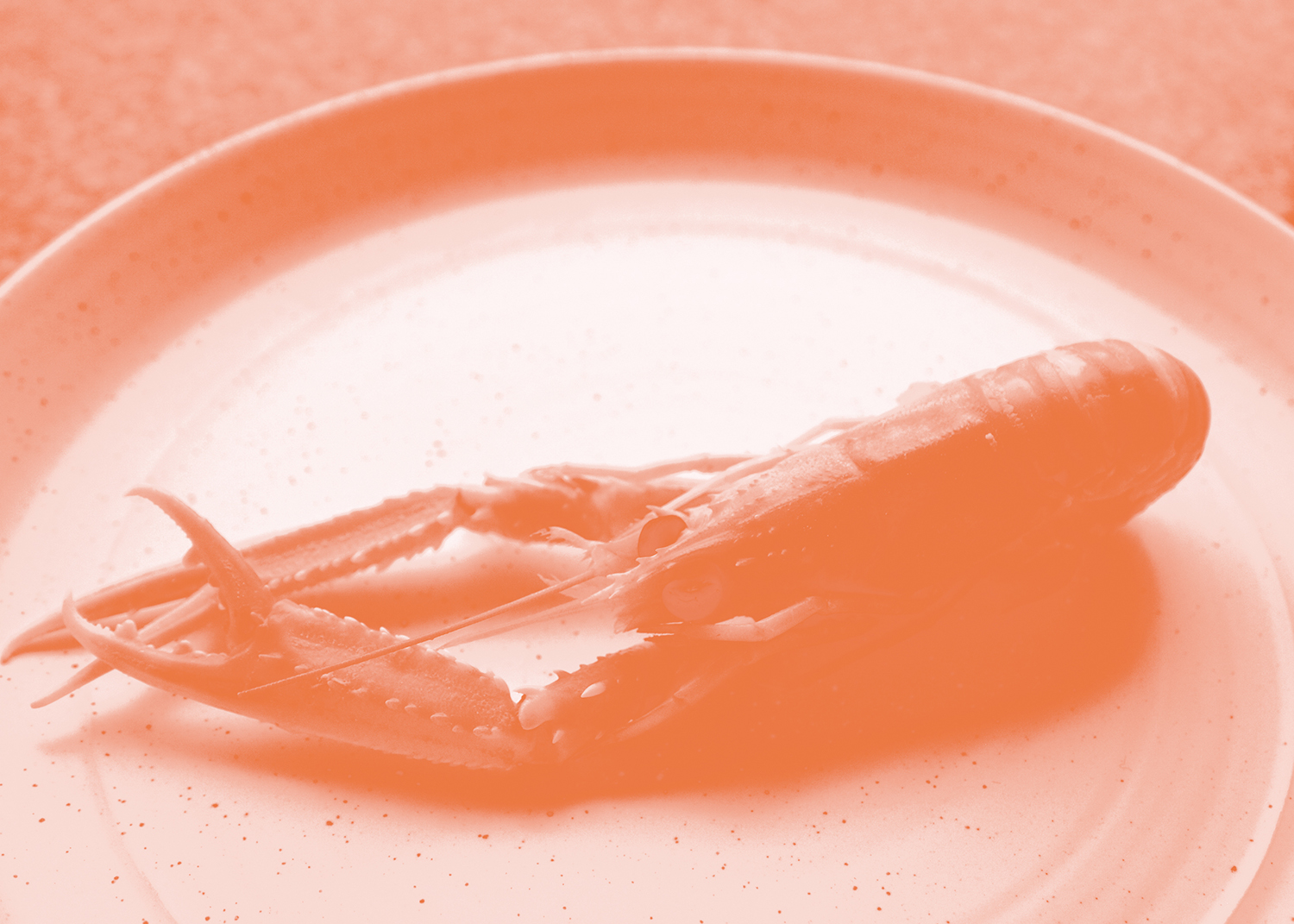Endangered Kitchen explores disappearing and lesser known food practices through the lens of contemporary politics, climate change and recipes.
Halloumi is a global cheese, adopted by cultures from the Balkans to North Africa. A version of it has even made it as far as Brazil, where queijo coalho has become a beachside staple—originally brought to Latin America by Lebanese immigrants, Brazilian beachgoers can get their halloumi fried by vendors carrying portable burners. It holds a special place in the hearts of vegetarians worldwide, its high melting point and odd firmness making it a useful alternative to meat. Though well travelled, halloumi cheese hails from the smallest of places, an island that floats on Europe’s south eastern periphery—Cyprus. Halloumi has always been a key ingredient in my Cypriot family’s kitchen. From eating it fried for breakfast alongside sesame-coated bread and honey, to grilling it on the barbecue on Sunday afternoons, halloumi’s versatility is often championed in Cypriot cuisine.
Saddling the Mediterranean and the Middle East, historically Cyprus has been a site where the Christian West meets the Islamic East, making the country strategically useful to larger global powers. In the last 150 years alone, Cyprus has been under Turkish rule, then occupied by the British before being won back by the Cypriots, plunged into a civil war, all before being swiftly invaded again by Turkey which now occupies the northern part of the island. Rich in natural resources, it has been stripped of its copper, minerals and now natural gas during its various foreign occupations. Additionally, every year hundreds of thousands of tourists flock to its beaches to take advantage of the eleven months of sun the island enjoys. After the occupation indigenous Cypriots, many who also have Greek or Turkish roots, were divided, the South becoming a Greek-speaking, Christian part of Europe and the North becoming a Turkish-speaking, Muslim republic. Both communities have been kept apart since 1974. In the meantime, Brits still maintain a small chunk of land for naval bases, from which many wars have been launched. Turkey’s occupation remains a problem for the islanders, but though there have been calls to re-involve the UN to end the occupation, Cyprus lies at a political impasse. After forty-seven years of failed negotiations, no one has yet managed to untie the island’s complicated, political knots.
Until now, perhaps.
Try and engage a Cypriot in a political discussion, and you will quickly find yourself stuck discussing the events of 1974. Engage a Cypriot, however, in discussions about anything edible and you will find yourself talking for days. For such a small island, the Cypriot cuisine is vast. While colonizers from the Persians to the Phoenicians have come and gone, their many recipes and ingredients have remained. Food is important to Cypriots, culturally and socially, but also economically—food accounts for 65% of all Cypriot exports. And of that 65%, an enormous 15% of this is the exportation of the island’s white gold—halloumi cheese.
Since the 1990s, Cyprus has been embroiled in a long battle to gain a Protected Designation of Origin (PDO) for its χαλούμι/halloumi/hellim (hellim is the cheese’s Turkish name, the other two are Greek). A PDO is akin to the concept of terroir – that is, it refers to food and drink’s’ sense of place. PDO products, like French champagne, German bratwurst, English stilton and Italian prosecco must be produced, processed and prepared in a specific geographical location (champagne must be produced in Champagne for example) using traditional ingredients and know-how. Over the last three decades, many other countries have attempted to claim halloumi as their own. The USA, Canada, Bulgaria, Lebanon, Turkey, Brazil and the United Kingdom and even Denmark, were just a few lobbying for their own PDO. During this time, other countries began producing imitations of halloumi which were branded and sold as ‘grilling cheese’. But in a country that feels more often than not like an amalgamation of other cultures and nations, halloumi is one of the only things that is, for Cypriots, distinctly their own, making it particularly precious and worth defending. Finally, in April 2021, the PDO was granted to Cyprus. This ensured that the name χαλούμι/halloumi/hellim could only be applied to cheese produced on Cypriot soil.
“The fact that it has been approved is a miracle. I never thought it would happen!” says Constantinos Pittas a member of the prominent Pittas family, one of Cyprus’s oldest and most influential dairies on the island “I remember our family was the first to start the [PDO application] process… you have to listen to everybody—from producers and farmers to the state. Due to politics, this resulted in the application file being submitted and then recalled. A country can only apply for a PDO once. If you lose it, then that’s it, so there was some pressure.”
The main hurdle for halloumi’s PDO was always the Turkish annexation of the North and an inability for the aforementioned producers, farmers and government officials to come to an agreement about who would reap the benefits of designation As Constantinos explains, “Some were [in favor] of the application to cover the island as a whole and others believed that only Greek Cypriots should be part of it, so this created further complications.”
While Cyprus’s bid to put halloumi on the map strikes on long-standing geopolitical tensions, the island’s PDO may point toward a changing political future. In 2016, it was decided that hellim made in Turkish-occupied Cyprus should be included in the PDO. “There are people who are not looking to reunify Cyprus, the older generation who experienced the invasion and all the upset that took place,” says Constantinos, “But younger people who are forward-looking do not see a reason why not—these are people who don’t carry the scars of the invasion, and are more open minded. This comment catches me off guard, this is a departure from the anti-Turkish rhetoric from the older, refugee diaspora that I grew up around—I’m pleased to hear that these views are no longer relevant and that there is hope for both communities to reunite. I ask him whether the winning of the PDO could help in the political negotiations. “It’s a step forward. I cannot tell for sure whether this will be a key factor but a brand name of Cyprus, if it’s for both communities, will help.’ After all, acknowledging that halloumi is both hellim and halloumi, made by two communities who both identify as Cypriot, will be one of the first time recognising that the island has done something using the sum of all its parts since at least 1974.
Though both communities will prosper financially from halloumi’s PDO, it is perhaps the Turkish North that needs it more. Though parts of it remained untouched since the 70s—there are still shops full of their ‘74 stock and turtles have returned to many beaches when coastal towns were abandoned. Crossing the military ‘green line’ that divides the north from the south, which I have done many times with my father who is a refugee, feels like going between two countries, one considerably worse off than the other. “You know, Cypriots are Cypriots. Something happened back in the day and we got separated, somehow,” says Constantinos. “I don’t think the Turkish Cypriots should be left out, because halloumi is the number one export from Cyprus and creates revenue for all of us. Many of us are employed by it and there’s more potential with it—the numbers have been growing exponentially over the last ten years.” With the PDO won and the halloumi industry booming, it seems as if there is enough demand to offer employment and revenue for both Greeks and Turks alike.
Up until now, halloumi has always been a simple, humble thing, perhaps viewed in the same way that the global community has viewed Cyprus itself —as an easy-to-manage resource. While the country has struggled to find solutions to their political division, halloumi might do what no leader has managed to do for years—after invasions, civil war, failed peace talks and population displacement, it seems like the country’s most important negotiator will be in the form of this precious, white, squeaky cheese. Halloumi/Hellim truly is a great unifier, an unlikely tool that has helped pull two communities at odds back together, helping this little island speak up for itself in the face of larger global powers.
How to Make Grilling Cheese
Halloumi’s recipe, as Constantinos tells us, “is not so secret anymore.” He’s right, I was taught how to make the cheese by an Englishwoman, not, as many would expect, some elderly thia in her black, laced mourning outfit. Due to the delay in winning the PDO, much halloumi has been made outside of Cyprus —in the past, the rest of the world might have called this halloumi, but nowadays, it should be known as ‘grilling cheese.’ Traditionally halloumi/hellim would have been made with sheep and goat milk, most likely the Shami goat and Chios sheep, native to the southern Mediterrannean region. However in more recent years, Cyprus has adapted the recipe for cow’s milk. Grilling cheese is a delightfully quick and easy cheese to make. It is also the only cheese that doesn’t melt and can be incorporated into meals in a number of ways. I use dried mint in mine much like the thies do in the village.
Ingredients
- 2 L full fat milk (use cow, goat or sheep – or a mixture of all of them!)
- 3 tsp vegetarian rennet
- Generous amount of dried mint
- 2 tsp salt for poaching the curd, then more for seasoning and brining
- A thermometer
Directions
First stage
- Heat the milk to 36°C / 97°F in a wide, shallow pan
- Add in the rennet and mint stirring it in gently
- Let the mixture set for one hour – it will set like jelly. You can speed this up by putting it in the fridge.
Second stage
- Keeping it in the pan, cut the curds (the set part) into cubes. You will notice a watery liquid in the pan as well – this is the whey. Once you cut the cubes, leave both to set for another half an hour.
Third stage
- Heat the curds and whey to 38°C/ 97°F, slowly, over a gentle heat
- Gently lay the curds and whey out into a sieve lined with a muslin or a tea towel, which is balanced above a container to catch the whey.
- Leave to drain until firm (takes about an hour, make sure you keep the whey!!!). You will now have a ball of what is essentially a ricotta cheese.
Fourth stage
- Heat all of the whey (about 500 ml) to 85°C / 185°F with 1 tablespoon of salt
- Turn the curd onto a board and slice into 2 inch pieces.
- Once the whey reaches 85°C / 185°F, turn the heat off and place the curd into the hot liquid.
- Wait for the curd to rise to the top—once it has risen it is ready. I choose to leave it floating at the top for about 15 minutes.
- Gently put the cheese back into your muslin cloth and sieve – it will be very delicate but firms up quickly. Make sure to keep the remaining whey.
- Sprinkle it with a generous amount of salt (traditional recipes call for 5% of the cheese’s weight in salt), then liberally cover in dried mint.
Fifth stage
- To brine, boil 250g of whey with 25g of salt, then immerse the curds into the liquid and store in a jar or an airtight container. In this form, the cheese keeps for a couple of months in the fridge.
- Brine is not necessary if you can want to eat the cheese straight away. Typically fresh cheese is enjoyed best by frying (ideally with a bit of salt and lemon). However, brining adds to the flavor of the cheese, and helps to preserve it.
